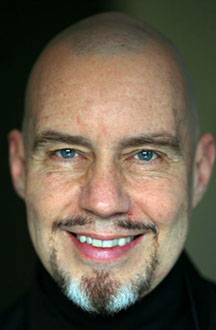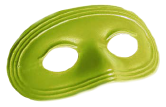From the Introduction:
 When was the last time you witnessed a performance by a magician that made you laugh so hard your sides hurt? Can you remember a magical performance piece that brought tears to your eyes? For that matter, when was the last time you saw a magician perform who wasn’t indistinguishable from some other magician you had seen? When was the last time one of your own performances affected your audience so deeply they felt you had changed their lives?
When was the last time you witnessed a performance by a magician that made you laugh so hard your sides hurt? Can you remember a magical performance piece that brought tears to your eyes? For that matter, when was the last time you saw a magician perform who wasn’t indistinguishable from some other magician you had seen? When was the last time one of your own performances affected your audience so deeply they felt you had changed their lives?
If you’ve wanted to create unique and uniquely moving art with your magic, this book is for you. We are often told by others, and sometimes even by the instructions that come with magic tricks that, “of course, you’ll want to make this your own.” This means that you’re expected to be creative and make this little trick something that is perfectly suited to your performing personality and way of doing things. What they fail to tell you is how you’re supposed to do that! I remember being an 8 year old and reading that, and finding myself completely bewildered. Make it my own? How could I possibly improve on something that totally amazed me when it had been demonstrated to me in the store, and which I could hardly wait to show to my family and friends, so they would be amazed and mystified at my powers?
Later on in life, I found myself studying acting, music and dance, with the idea of becoming a Broadway actor. The training I received as a performer exposed me to some quite amazing techniques for expanding my own emotional range, my own sense of personal passion, and for discovering creative solutions to performance problems of all kinds. I went on to study directing and teach acting at the University of Pittsburgh for a time, and then to become a business manager for shows in New York City, and, ultimately to managing some of the most innovative magicians in the world, and helping them to develop their own new material.
For the past several years, I’ve been teaching segments of Jeff McBride’s & Eugene Burger’s Master Classes at Jeff’s school in Las Vegas. During each class I am called on to do a couple of hours on “Magic and Theatre,” in which I teach the magicians some of the basics of being a performer -- something I was surprised to find that many of them had never considered.
Many of us come to magic through our own curiosities about “how it’s done.” Endlessly thrilled by the techniques of deception, it’s easy to forget that the primary purpose of performing magic is to entertain an audience, and that our primary role is that of entertainer. Magic is only a means to that end.
So, through repeated seminars, I found myself talking about what makes any theatrical piece interesting, and what all theatrical pieces have in common – live actors (as opposed to actors on film or video tape), live (hopefully!) audiences, a “stage” of sorts, the telling of stories with a certain kind of structure, character, costume, lighting – the whole gamut.
Much of what I taught over the years, and what I’ve used as I directed new magic shows and pieces is contained in the pages that follow. Just last year, I began changing the thrust of my workshops to focus on using theatre games and improvisational techniques to help students discover new ways to be creative with their magic. I found myself pulling out many of the old exercises I had learned as a student in order to help me develop the power of my own work as a performer and director. These were dusted off and re-deployed in ways that could help magicians discover their own creativity. The workshops took on a new level of excitement for me, and for our students. Together we learned the joy of stretching our boundaries and discovered new ways of approaching our creative process. My only frustration was that there wasn’t enough time to go into the kind of depth I really wanted to within the context of the two or three hours I am allotted during a Master Class. It would be easy to spend many full days and weeks exploring with this kind of exercise. One day soon I’ll arrange to do that. In the meantime, through this book, I’ll share many of the ideas and exercises with you, and you can try as many as you like.
Please take note, though: This is a book designed to inspire DOING, not thinking alone. If you just read it and think about what it has to say, you may find it to be interesting and instructive – but only by actually trying the different exercises will you discover the true power they contain. Some of those which may seem the most simplistic as you read them will prove to be the most powerful when you actually try them out. The exercises are designed to help you stretch and push against your own boundaries and natural inhibitions. Many of them will make you feel uncomfortable as you try them the first time. This is a GOOD thing. Growing pains are necessary for those of us who want to continue growing. And if you want to pursue a career as a magical artist, you’ll want to continue to expand and grow. Few things in life can be more exciting than growing into new capabilities, discovering new wisdom through your own experiences, and creating great art.
You have the ability to do all of this – but only if you’re willing to push against the boundaries that currently limit you. What follows is a road map right up to the edge of lots of those boundaries. It’s up to you to push beyond and discover your own creative powers. So prepare yourself for adventure, and let’s get started!
In the first few chapters that follow, I’ll introduce you to some of the basic philosophy and psychological principles that will help you enhance your own thinking about creativity. After that, I’ll provide specific, hands-on exercises you can use to jump-start your own creative system. Finally, I’ll present you with some case studies to show how the ideas and exercises can result in new and exciting creations. In some cases these will be in the form of a story about how a particular piece you may have seen came to be created. In others they will be flights of fancy, encouraging you to take your own directions and develop your own creative presentation for a particular effect.
As you go, much of what is presented may feel slightly strange. Some of the exercises are guaranteed to make you feel downright silly. Remember, the more uncomfortable you feel as you’re working through an exercise, the more you are pushing your boundaries. The more you push those boundaries, the more exciting your future creations and all your performances will be. So push ever onward. Don’t let fear or discomfort stop you. And remember to have fun!


